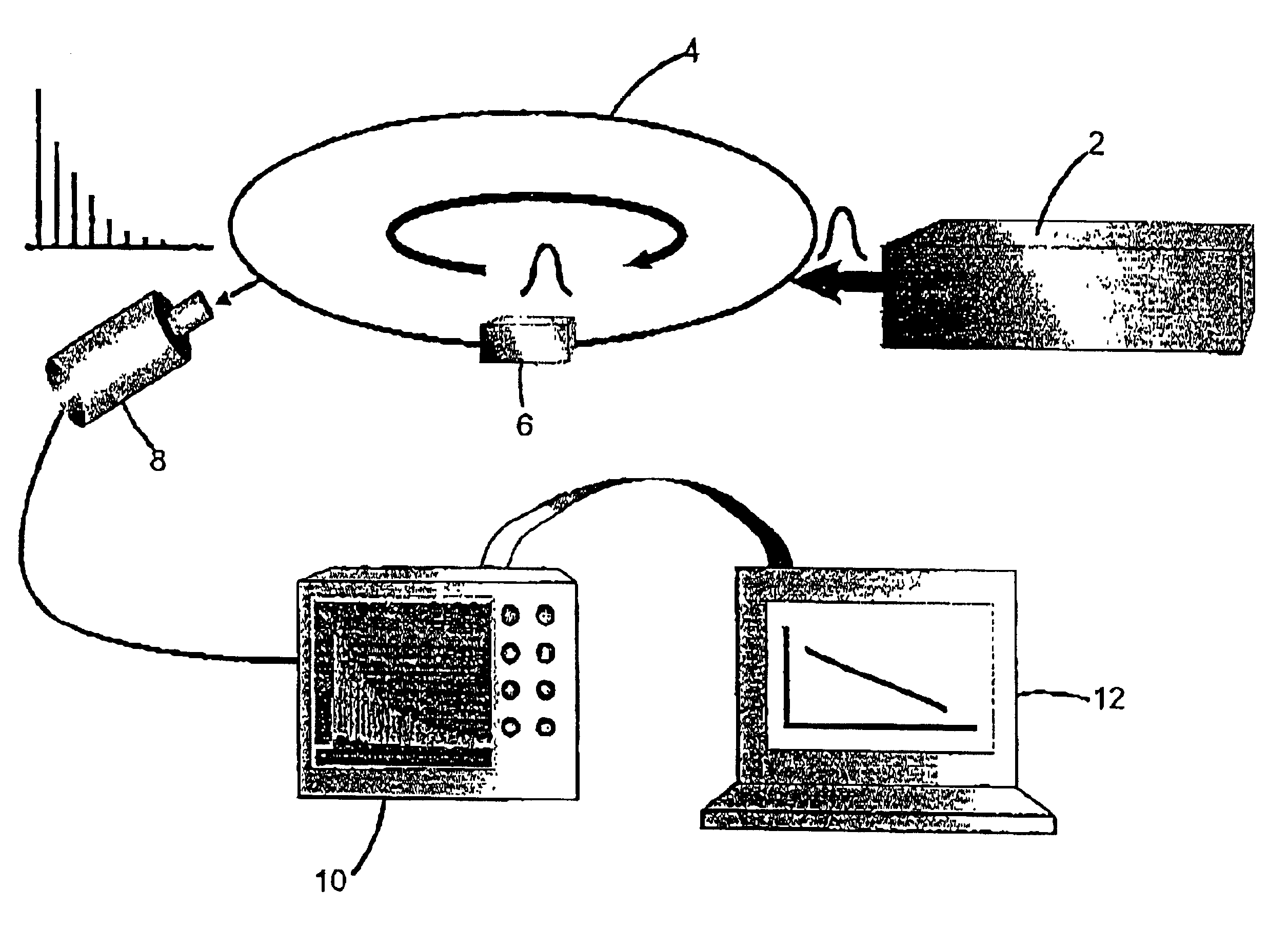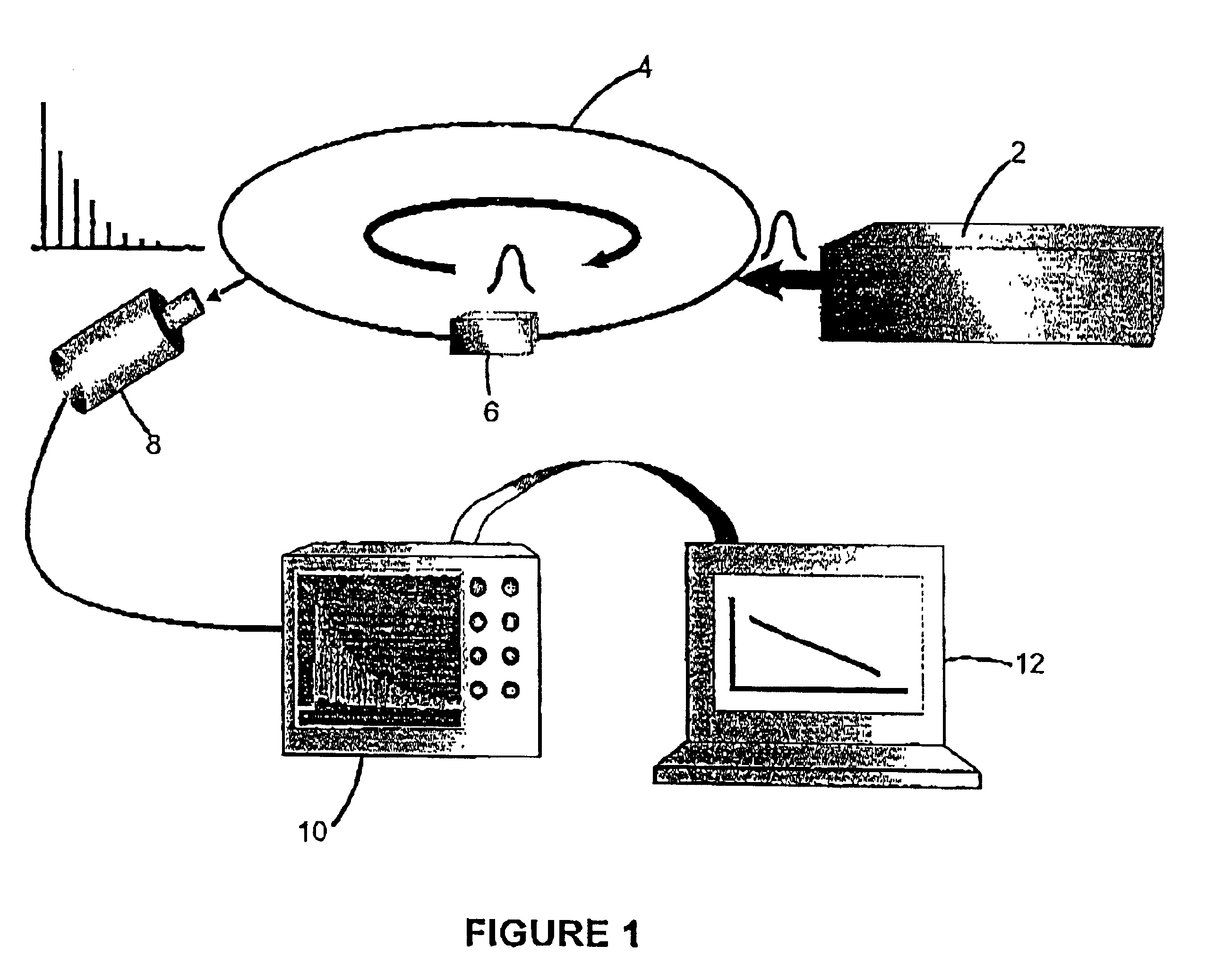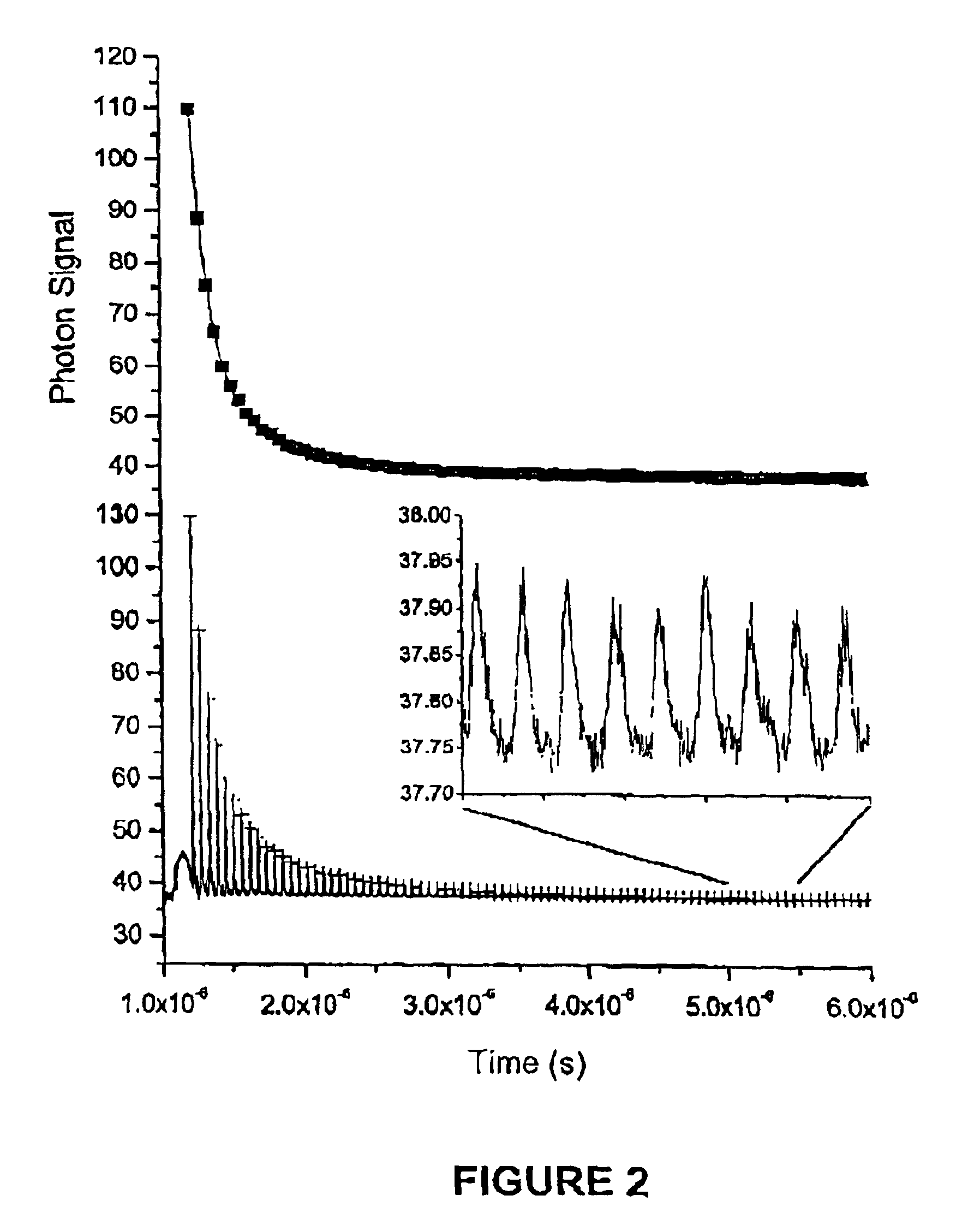Optical loop ring-down
a technology of optical loops and rings, applied in the field of optical loop ringdown, can solve the problems of difficult measurement of low optical losses using such techniques, unreliable data, and limited sensitivity of single or multi-pass absorption techniques, and achieve the effect of illumination of loops
- Summary
- Abstract
- Description
- Claims
- Application Information
AI Technical Summary
Problems solved by technology
Method used
Image
Examples
working examples
Example 1
Fiber Loop Ring-Down Spectroscopy
Introduction
The characterization of optical properties, such as transmission spectrum or typical dB loss per unit length, of optical fibers is of central importance to any industry that uses or manufactures these fibers. Frequently, these properties are determined using a long length of fiber and measuring, e.g., the transmission spectrum, using a well calibrated and stable light source and detector. Measuring the optical properties and typical losses of fiber connections (fusion splices or mechanical splices) is more difficult since an individual splice ideally does not contribute much to the overall loss and therefore the measurement will frequently only give an upper limit for the loss. Alternatively, one can determine the average loss of a connection using are large number of splices, but will not be able to characterize the distribution of losses of those connections easily.
The fiber loop ring-down technique of the invention can be used...
example 2
A Ring-Down Absorption Detector for a Laboratory-on-a-Chip Device
Introduction
Recent developments in the area of micro-Total Analysis Systems (μ-TAS) have included systems that perform chemical reactions, separation and detection on a single microchip (Harrison et al. 1993; van den Berg et al. 2000). Compared to conventional systems, lab-on-a-chip devices have reduced analysis times and use minute amounts of sample, solvents and reagents due to their small dimensions. In fact, the analysis of a simple mixture has been performed in less than one millisecond using only 100 picoliters of sample (Jacobson et al. 1998). The small amounts of sample and reagent required, combined with rapid analyses, make microfluidic devices extremely attractive for several analytical applications including chemical analysis of biological and medicinal samples.
Currently, most microfluidic analyses utilize molecular fluorescence as a means of detection. However, fluorescence is not a universal method of det...
example 3
A Ring-Down Absorption Detector
An experimental setup as shown in FIG. 1 was used. The light source was a nitrogen (or Nd:YAG) laser-pumped dye laser with a bandwidth of about 2 nm, a pulse width of 500 ps (or 7 ns) and a power of 50-200 μJ. The mildly focussed output of this laser was coupled into an optical fiber loop (length 1 m-77 m) at a 3 cm radius bend of the fiber (multimode Anhydroguide-G LOW OH Vis-IR Fiber, Fiberguide Industries, 50 μm core, 125 μm cladding). The loop was completed using a splice connector (Fibrlok®, 3M). A photomultiplier tube (PMT) (Hamamatsu, R955) was located at a distance (minimum=50 cm) away from the excitation region and monitored the emitted light at a similar 3 cm radius bend of the fiber. The PMT was gated such that the first 270 ns after each laser pulse were not recorded. This was done because the initial photon signal had abnormally high intensity, probably resulting from stray light and light coupled into the jacket of the fiber as opposed to...
PUM
| Property | Measurement | Unit |
|---|---|---|
| average path length | aaaaa | aaaaa |
| length | aaaaa | aaaaa |
| length | aaaaa | aaaaa |
Abstract
Description
Claims
Application Information
 Login to View More
Login to View More - R&D
- Intellectual Property
- Life Sciences
- Materials
- Tech Scout
- Unparalleled Data Quality
- Higher Quality Content
- 60% Fewer Hallucinations
Browse by: Latest US Patents, China's latest patents, Technical Efficacy Thesaurus, Application Domain, Technology Topic, Popular Technical Reports.
© 2025 PatSnap. All rights reserved.Legal|Privacy policy|Modern Slavery Act Transparency Statement|Sitemap|About US| Contact US: help@patsnap.com



